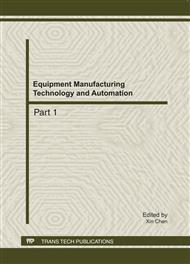p.2041
p.2047
p.2051
p.2056
p.2063
p.2069
p.2073
p.2079
p.2085
An Introductory and Analysis of the Stationary Blade Rotary Compressor
Abstract:
A new type of stationary blade rotary compressor is developed to overcome the rolling piston compressor’s weaknesses such as severe leaking loss and friction waste. The new compressor has unique sealing structures and friction-reducing techniques, featuring in that the compressor adopts a stationary blade whose out-end is hermetically fastened to the cylinder’s inner wall and the blade’s two side-ends are hermetically fastened to the end-covers which respectively set in both ends of the cylinder. Due to that the cylinder, the blade and the end-covers all are closely fitted to each other, the leakage and friction occurred from these parts are completely eliminated. This paper introduces the compressor’s working principle and structure characteristics, deduces the calculation formulas for displacement volume, chamber pressure and thermodynamic properties, and discusses the design principles of compressor structure parameters and what effects these parameters have on leakage and friction. The research result shows that the stationary blade compressor, in comparison with the conventional rolling piston compressor, has displayed some unique advantages in seal property, friction reduction, manufacturing and assembling techniques.
Info:
Periodical:
Pages:
2063-2068
Citation:
Online since:
August 2011
Authors:
Price:
Сopyright:
© 2011 Trans Tech Publications Ltd. All Rights Reserved
Share:
Citation:


